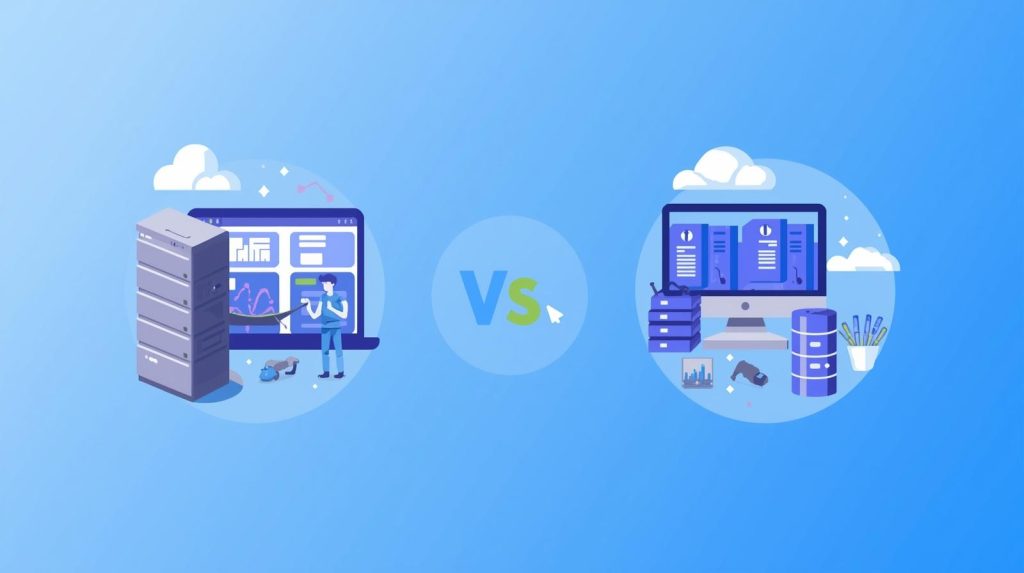Last Updated: June 3, 2025 | Back to Blog
Choosing the right server setup is crucial for your company’s performance and data security. This guide explains the core differences between on-premise and cloud servers to help you make an informed decision.
What Is an On-Premise Server?
An on-premise server is a physical machine located at your business site. You maintain full control over your infrastructure, hardware, and software environment.
This setup allows companies to manage data internally, providing tight control and privacy — ideal for highly regulated industries.
Advantages of On-Premise Servers
On-premise servers offer total control over data, hardware, and system configurations. Businesses with specific compliance needs often choose this model.
- Full control over hardware and data security
- Customizable infrastructure for unique business needs
- No recurring monthly hosting or subscription fees
Disadvantages
Despite greater control, on-premise solutions require high upfront investment and dedicated IT management. It can be less flexible for growing companies.
- High capital expenditure for hardware and setup
- Requires in-house IT staff or contracted services
- Challenging to scale quickly with business growth
What Is a Cloud Server?
A cloud server is a virtual server hosted on the internet by third-party providers like AWS, Microsoft Azure, or Google Cloud. Businesses pay for usage on-demand.
Cloud solutions are designed for scalability, remote access, and automated backup — perfect for modern hybrid and remote work environments.
Advantages of Cloud Servers
Cloud servers simplify IT infrastructure by offering flexibility and reducing physical dependency. They are cost-effective and easy to manage remotely.
- Scalable and flexible server resources
- Lower upfront investment and predictable costs
- Access data and apps from anywhere in the world
- Automatic updates, patching, and backup features
Disadvantages
Though flexible, cloud servers offer less direct control and rely heavily on your internet connectivity. Vendor lock-in is also a potential risk.
- Reduced control over server configurations
- Monthly or yearly recurring charges
- Performance dependent on internet speed
Which One Should You Choose?
Choosing between on-premise and cloud depends on your business model, compliance requirements, and growth strategy. Each has its place based on context.
Hybrid models are also gaining traction, blending cloud flexibility with on-premise control to meet the best of both worlds.
Compare at a Glance
Use this table to quickly compare the differences between cloud and on-premise servers across key factors.
| Feature | On-Premise | Cloud |
|---|---|---|
| Setup Cost | High | Low |
| Scalability | Limited | Highly Scalable |
| Maintenance | In-house | Handled by provider |
| Access | Only within office network | Access from anywhere |
Conclusion
On-premise servers offer control, while cloud solutions provide scalability and cost-efficiency. There’s no one-size-fits-all — the best solution depends on your needs.
To make the best decision for your business, consult with experienced IT professionals and evaluate your long-term goals and budget.
For expert consultation, contact our IT team today or learn more about our Cloud Solutions.
Further Reading
📢 Found this helpful? Share it with your network to help others make smarter IT decisions!
